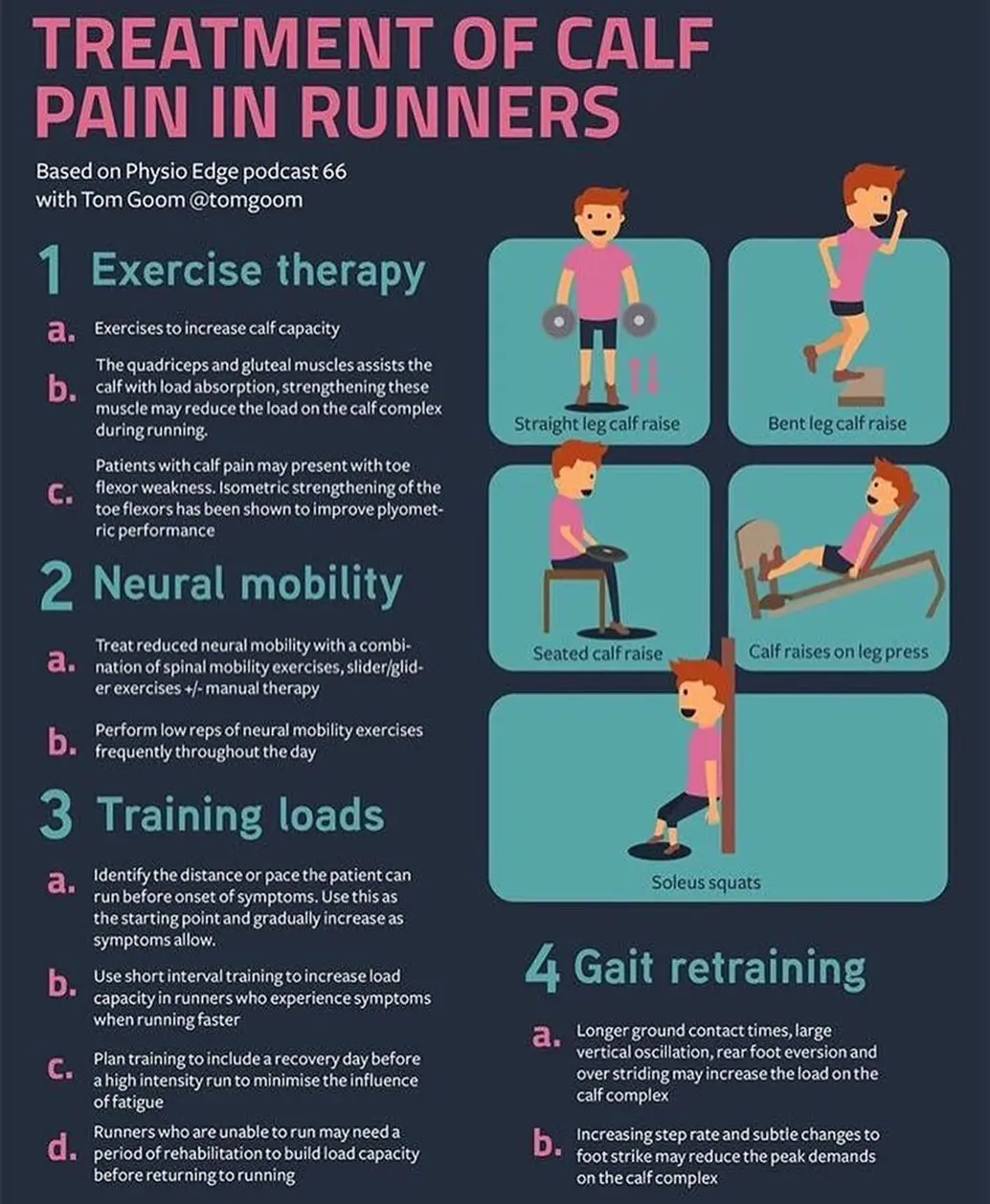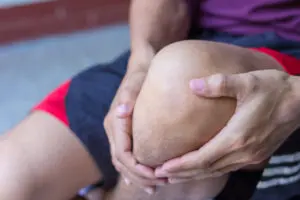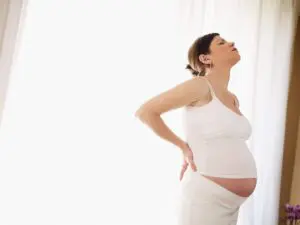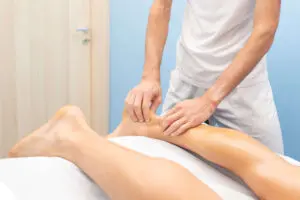Calf Pain
Brisbane is a great town for running! So we see LOTS of calf pain from running at Knead Massage.
If you experience calf pain after running a few kilometres, and the pain doesn’t reduce as you go – you may have an overuse injury known as Biomechanical Overload Syndrome (BOS).
Unlike a calf tear, which happens suddenly, with pain that is obvious in all activities (until the tear heals) – pain that is only experienced while running, is probably an overuse injury.
Fortunately, there’s a strategy a runner can employ with their Myotherapist to live pain free – cause we know, RUNNERS GOTTA RUN.
Why do we get Calf Pain Running?
The usual risk factors:
- Inadequate rest or recovery (common in those who are attempting their first marathon without a coach and mistakenly believe they have to run 30km+ in one session multiple times a week).
- Weakness in the leg complex
- Returning to running after a training break – and being aged 40-60
- Increase in training load – running faster, or more often – sudden introduction of hills.
- Stress and lack of sleep
- Changing to minimalist shoes without an appropriate tapering up (suddenly running your usual distance in minimalist footwear you haven’t gradually adapted to).
- Changing from their natural heel strike pattern to a toe pattern without having an injury that is forcing this change
If you are affected by this condition – you’ve probably noticed that you can’t just stretch and massage it away. It’s important to book a consultation with a Myotherapist or other healthcare professional for an assessment.
How does calf pain in runners happen?
Clients that present with these symptoms are often fit people, who run and workout with weights. What we commonly hear from runners with calf pain is “I don’t need to train my legs at the gym – because I run.”
Unfortunately, this isn’t true. The best solution to Biomechanical Overload Syndrome of the calf from running, is to increase the strength of the lower leg (calves and toe flexors).
What should I do?
Perform the strengthening exercises in the infographic below (from educator David Pope at clinical edge sharing the insights of The Running Physio – Tom Goom).
- Limit the distance you run – stop running before the symptoms become obvious
- experiment with a walk run approach – run for 10 minutes then walk for 2-3 minutes. Work out the best ratio for you.
- Book in to Knead Massage Brisbane for a myotherapy assessment of your calf pain. A Myotherapist can design a strength and conditioning program appropriate to your situation and use many techniques to reduce the irritation and pain.
- Incorrect footwear is commonly an ingredient of pain – a consultation with a podiatrist for orthotics or optimal footwear may be appropriate.

Treatment Guide for Calf Pain in Runners
Based on Physio Edge podcast 66 with Tom Goom
What shouldn’t I do?
- You shouldn’t run through it – symptoms will just get worse.
- You shouldn’t abandon running entirely – stop running before calf pain happens or combine walking and running before it does.
- Don’t run hills if you have these symptoms
- Don’t ignore it – getting massage constantly won’t make this better. Massage may help after you have severe pain, but it won’t stop it from coming back.
- Consider using the treadmill over the bitumen. A treadmill evokes approximately 40% less force on average per step. The calf won’t have to work as hard absorbing shock.
Calf pain when running can be a complex problem – consult with a Myotherapist for simple solutions.
Related Posts

Knee Cap Pain Brisbane

SIJ Pain Brisbane

Achilles Tendinopathy Brisbane
Frequently Asked Questions (FAQs)
What causes calf pain while running?
- Regularly experiencing calf pain after running a few kilometres that doesn’t reduce as you go may be an overuse injury called Biomechanical Overload Syndrome (BOS). Unlike a calf tear, which happens suddenly, with pain that is obvious in all activities (until the tear heals) – pain that is only experienced while running, is probably an overuse injury.
- Achilles tendon pain while running is commonly a type of overuse injury called a tendinopathy, which is a different condition to pain in the muscle itself. It’s possible to have both an Achilles tendinopathy and BOS at the same time.
What causes calf pain after running?
- Delayed onset muscle soreness (DOMS) – micro tears to the muscle after performing exercise – a normal side effect of exercise.
- Tendinopathy – an overloaded tendon is a condition that can require management different to that required of Biomechanical Overload Syndrome – the most common tendinopathy of the lower limb is Achilles tendinopathy which is felt at the back of the heel. Tendinopathies are usually sore on awakening.
- Calf strain (muscular tears) usually happen suddenly and the pain will be obvious whenever you bear weight on the affected leg.
Calf pain when running or jumping?
Calf strain (muscular tears) usually happen suddenly and the pain will be obvious on all activities you bear weight on the affected leg or generate force such as jumping and running. This type of pain experienced in the Achilles region may also be an Achilles tendinopathy.
What is calf strain?
Calf strain is another way of saying muscle tears. The severity of the tearing has 4 grades – grade 1 is mild tearing less than 15% of muscle fibers – meaning you can still walk on it. Grade 4 being a total tear that will require surgery to reconnect the muscle fibers.
Can you run with calf strain?
Running with a calf strain is not advisable as a calf strain is torn muscle.
- A grade 1 calf strain should not be run on for approximately 2-4 weeks.
- A grade 2 calf strain should not be run on for approximately 4-6 weeks.
- A grade 3 calf strain should not be run on for approximately 6 weeks.
- A grade 4 calf strain will require surgical intervention – your surgeon will advise you.
What causes calf strain?
Calf strain is usually caused by significant force/power generation – activities such as changing direction rapidly on the sports field, jumping onto a box or sprinting at maximal effort are common causes of muscle damage in the calf.
What grade calf strain do i have?
- Grade 1: walking and running are painful but achievable (some torn fibers) – do not run
- Grade 2: walking is painful – running is not sustainable (aprox 25% torn fibers) – do not run
- Grade 3: extreme pain when weight bearing – severe tearing – seek medical attention
- Grade 4: complete or near total muscle tear – surgery is required
How long can calf strain last?
- Grade 1 strains should be healed within 4 weeks
- Grade 2 strains require 4-6 weeks
- Grade 3 require 6-12 weeks
- Grade 4 require surgery – advice from your surgeon (12+weeks return to play)
What causes calf pain running?
Calf pain after running a few kilometres that doesn’t reduce as you go may be an overuse injury called Biomechanical Overload Syndrome (BOS). Unlike a calf tear, which happens suddenly, with pain that is obvious in all activities (until the tear heals) – pain that is only experienced while running, is probably an overload syndrome.
Why calf pain after running?
Delayed onset muscle soreness (DOMS) – micro tears to the muscle after performing exercise – a normal side effect of exercise.
What causes calf pain when running?
Calf pain after running a few kilometres that doesn’t reduce as you go may be an overuse injury called Biomechanical Overload Syndrome (BOS). Unlike a calf tear, which happens suddenly, with pain that is obvious in all activities (until the tear heals) – pain that is only experienced while running, is probably an overuse injury.
Calf pain when running and after?
Experiencing calf pain when running and after running is probably not biomechanical overload syndrome – at least not only biomechanical overload syndrome. Calf pain experienced both during and after running is probably related to a severe tendinopathy and or a calf strain (muscle tear). If you have pain during and after a run you should seek help from a myotherapist or other health professional.
Tendinopathy – an overloaded tendon is a condition that can require management different to that required of Biomechanical Overload Syndrome – the most common tendinopathy of the lower limb is Achilles tendinopathy which is felt at the back of the heel.
Calf strain (muscular tears) usually happen suddenly and the pain will be obvious whenever you bear weight on the affected leg.
Why calf muscles hurt after running?
Delayed onset muscle soreness (DOMS) – micro tears to the muscle after performing exercise – a normal side effect of exercise.
Calf pain when running long distance?
Calf pain after running a few kilometres that doesn’t reduce as you go may be an overuse injury called Biomechanical Overload Syndrome (BOS). Unlike a calf tear, which happens suddenly, with pain that is obvious in all activities (until the tear heals) – pain that is only experienced while running, is probably an overuse injury.
Calf pain when running causes?
Calf pain after running a few kilometres that doesn’t reduce as you go may be an overuse injury called Biomechanical Overload Syndrome (BOS). Unlike a calf tear, which happens suddenly, with pain that is obvious in all activities (until the tear heals) – pain that is only experienced while running, is probably an overuse injury.
Achilles tendon pain while running is commonly a type of overuse injury called a tendinopathy, which is a different condition to pain in the muscle itself. It’s possible to have both an Achilles tendinopathy and BOS at the same time. A charachteristic of Achilles tendinopathy pain is pain on arising.
How to massage calf strain?
Calf pain after running a few kilometres that doesn’t reduce as you go may be an overuse injury called Biomechanical Overload Syndrome (BOS). Unlike a calf tear, which happens suddenly, with pain that is obvious in all activities (until the tear heals) – pain that is only experienced while running, is probably an overuse injury.
Achilles tendon pain while running is commonly a type of overuse injury called a tendinopathy, which is a different condition to pain in the muscle itself. It’s possible to have both an Achilles tendinopathy and BOS at the same time. A charachteristic of Achilles tendinopathy pain is pain on arising.
How to massage calf strain?
Carefully. A remedial massage therapist or myotherapist may utilise lymphatic massage, Swedish massage or gentle myofascial techniques to improve blood flow (improve healing time) and relax the muscle.
When to massage calf strain?
Pain and muscle spasm are protective mechanisms to stop you from damaging the muscle further.
Remedial massage for calf strain is useful when performed by a qualified professional. It improves blood circulation and reduces muscle spasm – not so individuals can continue running, but so they can perform activities of daily life. It is helpful to seek a Remedial Massage therapist when you wish to reduce healing time.
When to stretch calf strain?
It is better to avoid stretching a calf strain (muscle tear) until it is healed.
Will torn calf muscle heal itself?
Grade 1-3 will eventually heal if the individual does not perform force generating activities in the acute stages (running, jumping, walking excessively, lifting weights etc). Eventually a grade 4 strain will “heal” – but not in a uniform and functional way. Surgical intervention ensures the best outcomes of grade 4 tears.
How long calf strain heal?
- Grade 1 strains should be healed within 4 weeks
- Grade 2 strains require 4-6 weeks
- Grade 3 require 6-12 weeks
- Grade 4 require surgery – advice from your surgeon (12+weeks return to play)
Links
References
https://www.ncbi.nlm.nih.gov/pubmed/27618240
https://www.ncbi.nlm.nih.gov/pubmed/15615505
https://www.ncbi.nlm.nih.gov/pubmed/10222542
https://bjsm.bmj.com/content/48/16/1257.short
https://www.ncbi.nlm.nih.gov/pubmed/24357642
https://www.ncbi.nlm.nih.gov/pubmed/25103133
https://www.ncbi.nlm.nih.gov/pubmed/27183120
kneadmassage
Latest posts by kneadmassage (see all)
- Knee Cap Pain Brisbane - July 3rd, 2023
- Calf Pain Running - July 3rd, 2023
- Natural Pain Relief with Thermotherapy - June 28th, 2023

